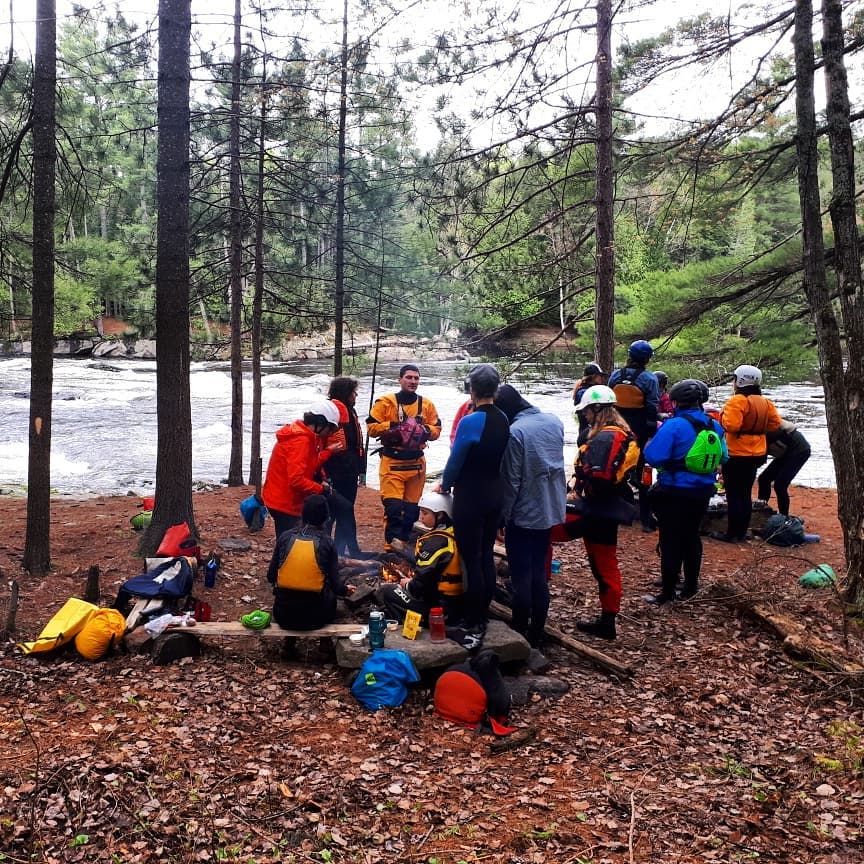Do you have a plan in place should a serious injury occur to one of your paddlers? What would you do first? Who would you call for assistance?
An Emergency Action Plan (EAP) is a plan trip leaders/clubs design to help them respond in a responsible and clear-headed way if an emergency occurs.
An EAP should be prepared for the river or site where you normally hold practices, and for any facility or site where you regularly host competitions. For away rivers, ask the local club for a copy of their EAP if they have one.
What should your EAP cover?
An EAP can be simple or elaborate. It should cover the following:
- Designate in advance who is in charge if an emergency occurs (this may be you).
- Have a cell phone with you and make sure the battery is fully charged. If this is not possible, find out the exact location of a telephone you can use at all times. Have spare change in case you need to use a pay phone.
- Have emergency telephone numbers with you; fire, police, ambulance (sometimes a simply 911 is NOT enough), as well as paddlers’ contact numbers (parents/guardians, next of kin).
- Have on hand a medical profile for each athlete so that this information can be provided to emergency medical personnel. Include in this profile signed consent from the parent/guardian to authorize medical treatment in an emergency (it’s good to know if a paddler may have medication in their bag, car, etc or has allergies to certain things).
- Prepare directions for Emergency Medical Services (EMS) to follow to reach the site as quickly as possible. You may want to include information such as the closest major intersection, one-way streets, or major landmarks (know easy evacuation points from the river and how to get in and out from these points; GPS points and a map is also a great way to keep track).
- Have a first-aid kit accessible and properly stocked at all times (all trip leaders are required to carry a first-aid kit).
- Designate in advance a call person: the person who makes contact with medical authorities and otherwise assists the person in charge. Be sure that your call person can give emergency vehicles precise directions to your facility or site.
EAP Template:
EAP Examples:
- Emergency Action Plan – Complete Example
- Emergency Action Plan – Example Map 1
- Emergency Action Plan – Example Map 2
- Emergency Action Plan – Example Map 3

